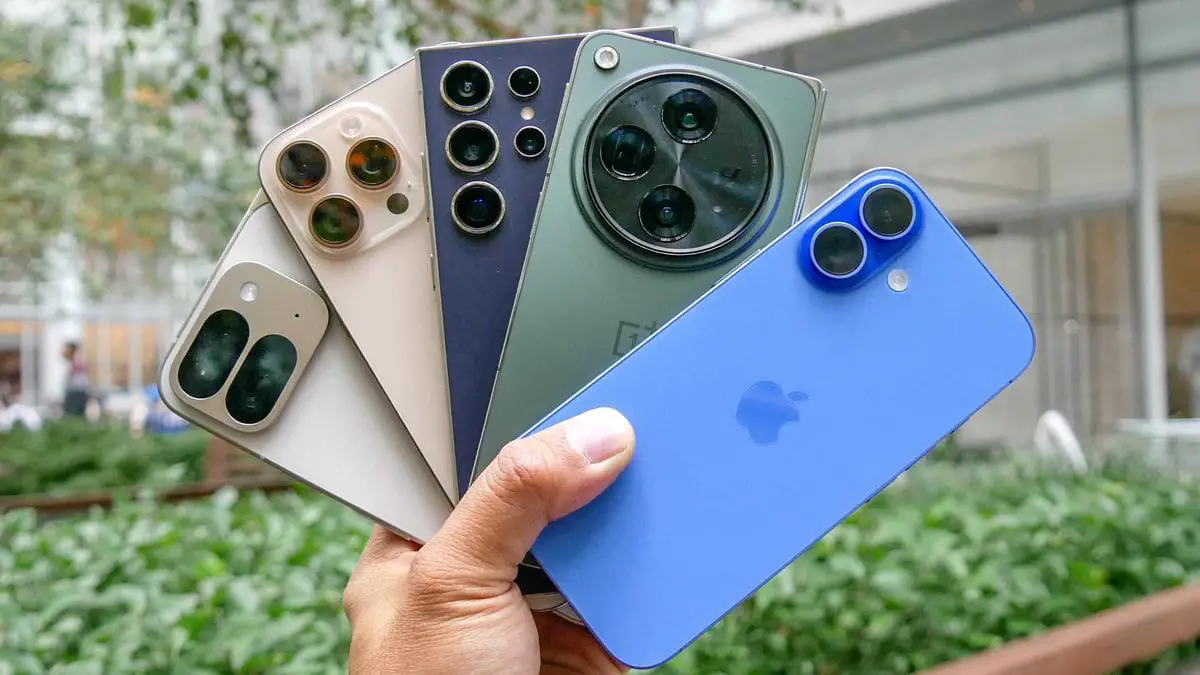Deep Learning Algorithms, a subset of machine learning, have evolved significantly since their inception. The term “deep learning” was coined in 2006 by Geoffrey Hinton, and its roots trace back to the 1940s with the introduction of neural networks. Notable milestones include the development of backpropagation in the 1970s and the creation of convolutional neural networks (CNNs) in the late 1980s. Deep Learning Algorithms are characterized by the use of artificial neural networks with multiple layers (deep neural networks) to model and solve complex tasks. These algorithms excel at automatically learning hierarchical representations from data, enabling them to extract intricate patterns and features. In 2012, deep learning gained widespread recognition when a deep neural network named AlexNet achieved remarkable success in the ImageNet Large Scale Visual Recognition Challenge. Since then, deep learning has permeated various domains, demonstrating prowess in image recognition, natural language processing, and reinforcement learning. The constant refinement of architectures, optimization techniques, and the advent of deep learning frameworks have propelled the field forward, fostering breakthroughs in artificial intelligence.
Deep learning is a subset of machine learning that focuses on artificial neural networks and deep neural networks. These algorithms have demonstrated remarkable success in various domains, ranging from image and speech recognition to natural language processing. In this comprehensive overview, we will delve into the key deep learning algorithms, providing examples and relevant dates to showcase their evolution.
1. Perceptron (1957): The perceptron, introduced by Frank Rosenblatt in 1957, is a fundamental building block of neural networks. While not technically a deep learning algorithm, it laid the foundation for later developments. The perceptron is a binary classifier that takes multiple binary inputs and produces a single binary output.
2. Backpropagation (1974): Backpropagation, proposed by Paul Werbos in 1974, is a crucial algorithm for training artificial neural networks. It uses a supervised learning approach to minimize the error by adjusting the weights in the network. This algorithm became the cornerstone for training deeper neural networks.
3. Hopfield Network (1982): A Hopfield network, introduced by John Hopfield in 1982, is a form of recurrent neural network (RNN). It is designed to store and recall patterns from noisy or incomplete input. Hopfield networks have applications in optimization problems, associative memory, and pattern recognition.
4. Radial Basis Function (RBF) Network (1988): The Radial Basis Function Network, developed by John Moody and Charles Darken in 1988, is a type of feedforward neural network. It uses radial basis functions as activation functions and has been applied to function approximation and pattern recognition tasks.
5. LeNet-5 (1998): LeNet-5, designed by Yann LeCun and his collaborators in 1998, is a convolutional neural network (CNN) architecture. It was primarily developed for handwritten digit recognition and played a pivotal role in the advancement of deep learning for image classification tasks.
6. Long Short-Term Memory (LSTM) Networks (1997): LSTM networks, introduced by Sepp Hochreiter and Jürgen Schmidhuber in 1997, address the vanishing gradient problem in training traditional RNNs. LSTMs have become instrumental in sequence-to-sequence tasks, such as natural language processing and speech recognition.
7. Restricted Boltzmann Machines (RBM) (2006): RBMs, proposed by Geoffrey Hinton and his collaborators in 2006, are generative stochastic artificial neural networks. They are used for dimensionality reduction, collaborative filtering, feature learning, and topic modelling.
8. Deep Belief Networks (DBN) (2006): Deep Belief Networks, also pioneered by Geoffrey Hinton and his colleagues, are composed of multiple layers of stochastic, latent variables. DBNs combine the advantages of RBMs and neural networks and have been successful in unsupervised learning tasks.
9. AlexNet (2012): AlexNet, developed by Alex Krizhevsky, Ilya Sutskever, and Geoffrey Hinton in 2012, marked a breakthrough in image classification. It won the ImageNet Large Scale Visual Recognition Challenge (ILSVRC) in 2012 and popularized the use of deep convolutional neural networks.
10. GoogleNet/Inception (2014): GoogleNet, also known as the Inception architecture, was introduced by the Google Research team in 2014. It introduced the concept of inception modules, which efficiently capture features at multiple scales. GoogleNet achieved high accuracy in the ILSVRC 2014 competition.
11. ResNet (2015): ResNet, short for Residual Network, was proposed by Kaiming He et al. in 2015. It introduced residual learning, utilizing shortcut connections to address the vanishing gradient problem in very deep networks. ResNet won the ILSVRC 2015 competition.
12. Generative Adversarial Networks (GANs) (2014): GANs, introduced by Ian Goodfellow and his colleagues in 2014, are a class of generative models that involve training two neural networks simultaneously – a generator and a discriminator. GANs have been widely used for image and content generation.
13. Seq2Seq (Sequence-to-Sequence) (2014): Sequence-to-Sequence models, proposed by Ilya Sutskever et al. in 2014, use recurrent neural networks to map input sequences to output sequences. They have been successful in tasks such as machine translation and text summarization.
14. Capsule Networks (CapsNets) (2017): Capsule Networks, introduced by Geoffrey Hinton and Alex Krizhevsky in 2017, aim to overcome some limitations of traditional CNNs, such as viewpoint variance. CapsNets use capsules to represent hierarchical structures in data, providing a more robust understanding of spatial relationships.
15. BERT (Bidirectional Encoder Representations from Transformers) (2018): BERT, developed by Google Research in 2018, revolutionized natural language processing. It is a pre-trained transformer-based model for language understanding tasks. BERT’s bidirectional context representation significantly improved the performance of various NLP applications.
16. Transformers (2017): The Transformer architecture, proposed by Vaswani et al. in 2017, marked a paradigm shift in sequence processing tasks. Transformers use self-attention mechanisms to capture contextual information efficiently and have become the foundation for many state-of-the-art models in NLP and beyond.
17. GPT-2 (Generative Pre-trained Transformer 2) (2019): GPT-2, developed by OpenAI in 2019, is a large-scale unsupervised language model. It demonstrated the capability to generate coherent and contextually relevant text, showcasing the potential of pre-trained transformer models in various language-related tasks.
18. Turing-NLG (2020): Turing-NLG, introduced by Microsoft in 2020, is a powerful language model designed for natural language generation tasks. It is built on the GPT-3 architecture and is capable of producing human-like text in a variety of styles and tones.
19. AlphaFold (2020): AlphaFold, developed by DeepMind, made headlines in 2020 for its breakthrough in predicting protein folding structures. This deep learning model demonstrated exceptional accuracy in predicting the 3D structures of proteins, advancing our understanding of biological processes.
20. CLIP (Contrastive Language–Image Pre-training) (2021): CLIP, developed by OpenAI in 2021, is a model capable of understanding images and text jointly. It demonstrated the ability to perform various vision and language tasks, showcasing the potential for cross-modal learning.
21. DALL-E (2021): DALL-E, also developed by OpenAI in 2021, is a generative model capable of creating diverse and creative images from textual descriptions. It highlights the potential of deep learning in creative content generation.
Deep learning has witnessed rapid advancements over the years, with each algorithm contributing to the field’s evolution. From the foundational perceptron to state-of-the-art models like GPT-3 and AlphaFold, these algorithms have reshaped the landscape of artificial intelligence. As research continues, we can expect further innovations that push the boundaries of what deep learning can achieve in diverse applications.
Conclusion
Deep learning algorithms have significantly transformed various domains, demonstrating remarkable advancements in artificial intelligence. Since their inception in the mid-20th century, these algorithms have evolved rapidly, reaching critical milestones in the last two decades. The early 2010s marked a turning point with the advent of deep neural networks, propelling breakthroughs in image recognition, natural language processing, and speech recognition. The subsequent years witnessed a surge in deep learning applications, notably in healthcare, finance, and autonomous systems. The period from 2015 to 2020 witnessed unprecedented growth, with neural networks becoming deeper and more complex, enabled by increased computational power and vast datasets. The deployment of convolutional neural networks (CNNs) and recurrent neural networks (RNNs) in tandem with innovations such as transfer learning and generative adversarial networks (GANs) further expanded the capabilities of deep learning. The ongoing trajectory suggests a continued integration of deep learning into diverse fields, with ongoing research focused on enhancing efficiency, interpretability, and addressing ethical considerations. The journey of deep learning algorithms is dynamic, with their impact expected to persist and flourish in the foreseeable future.







Leave a Reply